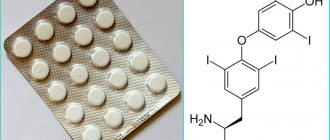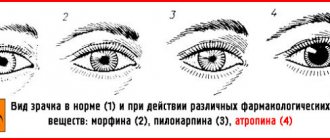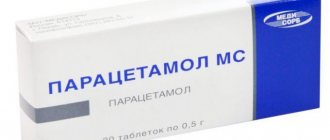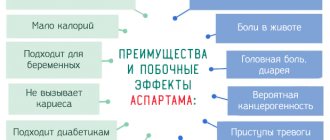Our modern life sometimes presents many unpleasant surprises. Stress, worry, and anxiety have become constant companions of humans. When the next turmoil unsettles the calm, everyone begins to think about taking sedatives and stimulants. What to choose? What medicine for depression can you buy at a pharmacy without a prescription? Are such medicines dangerous?
Antidepressants or tranquilizers?
Many people mistakenly believe that these two groups of medications act the same during stress. But it's not that simple. When going to the pharmacy for a suitable drug, arm yourself with some knowledge in the field of pharmacology.
Mechanism of action
Tranquilizers are psychotropic drugs used to treat overexcitation of the nervous system, temporarily eliminating fear, suppressing emotions, and correcting sleep.
Only doctors use such medications; medications can only be purchased at a pharmacy with a prescription. In medical practice today, a distinction is made between major and minor tranquilizers. The first are neuroleptics, potent psychotropics. The second are anxiolytics, these are the drugs that act much more gently and relieve anxiety and fear.
Any anxiolytic “works” at the level of the brain centers responsible for the formation of human emotions. Benzodiazepine representatives of the group have been studied better than others. Receptors of this series are closely connected in the brain with GABA (gamma-aminobutyric acid) receptors, which is responsible for inhibition processes in the central nervous system.
Contact between two types of receptors leads to blocking of excitation throughout the central nervous system. Depending on the type of benzodiazepine receptors involved in contact, the central nervous system implements one or another response. Therefore, some drugs act as anticonvulsants (Clonazepam), while others act as hypnotics (Nitrazepam).
Anxiolytic drugs from other pharmaceutical groups bind to other receptors (for example, serotonin, acetylcholine, adrenaline) and do not use GABA, but the main effect remains the same - the relief of anxiety. In other words, drugs in this group of drugs can have a number of effects:
- anxiolytic – anti-anxiety;
- hypnotic - sleeping pills;
- sedative – calming;
- anticonvulsant – antiepileptic;
- muscle relaxant – relaxing, relieving motor tension.
Special Recommendations
At least you can buy anti-depression pills without a prescription at any pharmacy. Despite all the safety of antidepressants and tranquilizers, do not get carried away with self-medication! A preliminary consultation with a doctor is mandatory. It is absolutely forbidden to take such medications for a long time! Do not forget about the long lists of contraindications for such products. Take care of your body.
There is a high probability of individual intolerance to the main or additional components of medicinal complexes taken for the first time. Therefore, in order to avoid unwanted reactions, it is recommended to do a test before starting drug therapy.
Classification
There is no unified clinical classification of tranquilizers due to the constant expansion of the list of drugs that have borderline properties. However, for the convenience of practicing physicians, several main groups of minor psychotropics are distinguished.
Based on the strength of the effect on the central nervous system, they are distinguished:
- sedatives that improve sleep, slightly inhibiting excitation processes in the neurons of the brain;
- anxiolytics or true tranquilizers;
- neuroleptics are the “heavy artillery” used in psychiatry.
According to their chemical structure, anxiolytics can be benzodiazepines, diphenylmethane derivatives, carbamates, and others (miscellaneous).
The most common drugs are benzodiazepines, which in turn are divided into:
- anxiolytics: strong (Diazepam, Alprazolam, Phenazepam, Lorazepam) and moderate (Bromazepam, Oxazepam, Gidazepam, Clobazam);
- tranquilizers with a hypnotic effect (Triazolam, Flunitrazepam, Midazolam, Nitrazepam, Estazolam);
- drugs that can stop seizures (Diazepam, Clonazepam).
A separate group consists of daytime tranquilizers that do not have a hypnotic effect. The drugs, being a type of benzodiazepines, act more mildly. Using group medications for treatment, patients do not change their usual lifestyle. These include: Gidazepam, Grandaxin, Medazepam and Oxazepam.
New generation tranquilizers form their own group of drugs. Their absolute advantage is the complete absence of addiction. The downside is a weak, short-lived result, many side effects. An example would be: Adaptol, Atarax, Afobazol.
List of potentially dangerous pharmacological groups
The most common potentially dangerous drugs include:
- sedatives, sedatives, hypnotics (Bromital, Barboval, Teraligen, Phenobarbital, Medinal) - once they enter the digestive tract, they are rapidly absorbed, affecting the body after 7 - 10 minutes; in case of an overdose, death occurs within 15 - 30 minutes ;
- tranquilizers (Seduxen, Elenium, Diazepam, Napoton, Librium, others) - have a depressant effect on the central nervous system, peripheral nervous, respiratory, cardiovascular systems;
- NSAIDs (Indomethacin, Aspirin, Nimesulide, Diclofenac, etc.) - are characterized by the presence of anti-inflammatory, analgesic, antipyretic properties;
- antibiotics (Penicillin, Tetracycline, Levomycetin, Cefazolin, etc.) - are actively used in infectious and inflammatory processes of bacterial etiology;
- antihistamines (Diphenhydramine, Suprastin, Diazolin, others) - relieve allergic manifestations and have a sedative effect;
- antihypertensive drugs (magnesium sulfate, Anaprilin, Captopril, Nifedipine, Metoprolol, Amiodarone) - reduce blood pressure due to a therapeutic effect on the activity of the cardiovascular system.
The remaining groups of drugs (medicines) are less dangerous to life, but if abused they can cause damage to health.
Indications for use
Tranquilizers of each subgroup treat specific negative symptoms. The drugs are used for a large number of pathologies, which are completely impossible to list. The most common reasons for prescribing anxiolytics are neurogenic pathologies, VSD, panic attacks, fear, anxiety, stress, neurosis-like conditions, PMS, menopause, as well as:
- psychosomatics: peptic ulcer, hypertension, cardiac ischemia, other pathologies;
- post-traumatic disorders;
- convulsions, including epileptic ones;
- chronic alcoholism, drug addiction, substance abuse;
- uncontrolled motor activity: hyperkinesia, tics, blepharospasm, myoclonus, and so on;
- spastic muscle conditions;
- premedication;
- insomnia;
- itchy skin;
- emotional instability.
Purpose principles
Since anxiolytics are classified as psychotropic drugs, that is, their point of application is brain cells, medications should be prescribed according to certain principles:
- doses of medications are minimal;
- courses of therapy are short (no more than a month) to avoid addiction;
- gradual withdrawal of funds;
- during therapy - a complete ban on alcohol;
- the course of treatment involves giving up driving and working on machines, equipment, and devices that require quick reactions.
Nature will calm your nerves
If you urgently need to put your nerves in order, it is better to turn to sedatives of plant origin. Corvalol, Corvaltab, Validol, Corvalment, Valerian have an effect similar to psychotropic drugs. Medicinal herbs will relieve tension and balance the nervous system: lemon balm, mint, oats, hyssop, lettuce, meadowsweet.
List of the most popular drugs
In modern medicine, tranquilizers mean anxiolytics that eliminate anxiety and fears before sleep. In turn, minor tranquilizers, as they are also called, are divided into groups, correlating with the time of their creation. The list of the most popular anxiolytics is presented in the table:
| Drug name | Cost in rubles |
| First generation representative | |
| Hydroxyzine | 187 |
| Representatives of the second generation | |
| Major or potent tranquilizers | |
| Phenazepam | 145 |
| Lorafen | 60 |
| Nozepam | 139 |
| Minor or anxiolytics | |
| Grandaxin | 312 |
| Spitomin | 799 |
| Phenibut | 43 |
| Mazepam | 700 |
| Tazepam | 135 |
| Representatives of the latest generation of drugs | |
| Atarax | 272 |
| Mexicor | 123 |
| Afobazole | 352 |
| Mebicar | 220 |
| Mexidol | 235 |
| Strezam | 327 |
Tranquilizers without prescriptions
Since psychotropic drugs (and anxiolytics are included in the group of these drugs) affect the higher nervous activity of a person, create many negative side effects and can have unpredictable results during the treatment process, all of them are dispensed only with a doctor’s prescription, and treatment is carried out under direct supervision psychiatrist, psychotherapist, neurologist.
However, the latest generation of drugs can be classified into different pharmacological groups, so today there are no clear restrictions on the sale of some drugs with sedative properties. They are sold as sedatives. There are few such drugs - these are isolated representatives of the new generation of non-benzodiazepine anxiolytics.
These remedies can eliminate almost all manifestations of anxiety, stress, a state of unreasonable fear, panic attacks and other pathological phenomena associated with the modern rhythm of life. Anxiolytics of this type are the safest and have a minimum number of contraindications for use and negative consequences after treatment.
The most popular is Afobazole, which is used to relieve neuroses, tics, adaptation disorders, and stressful situations.
Side effects rarely include weakness, vertigo, cephalgia, and dyspepsia.
The only limitation to use is individual intolerance to the drug.
In addition, you can purchase without a prescription:
- Benactizine (Amizil) is an effective tranquilizer with sedative properties for the treatment of neuroses;
- Buspirone (Spitomin) is a drug for the treatment of anxiety, neuroses of various etiologies with anxiety syndrome, excessive reactions to exogenous stimuli;
- Mebicar (Adaptol, Mebix) - prescribed for neurotic disorders due to prolonged mental, physical and emotional stress, coronary artery disease, during the rehabilitation period after a heart attack, when quitting smoking and alcohol;
- Mexidol - has a positive effect on memory, reduces daily stress, minimizes the risk of seizures and anxiety;
- Mexidol – effective for acute and chronic renal failure;
- Oxylidin - the drug helps overcome the hyperexcitability of the nervous system, calms, enhances the effect of antidepressants, narcotic painkillers, and is applicable for the treatment of brain disorders, atherosclerosis, neuroses;
- Strezam - the medicine helps to stabilize the emotional background, relieves fear, anxiety, panic;
- Phenibut is a drug that stimulates the central nervous system, blocking negative emotions, and is used in neurological and psychiatric practice in the treatment of anxiety and panic disorders, impaired processes of long-term memory formation, and insomnia.
Taking all other products in the group without a doctor’s prescription or purchasing them in pharmacies without a prescription is dangerous. This is especially true for benzodiazepines (strong), which are sometimes offered at pharmacies without a prescription to treat insomnia. Taking these drugs (Alprazolam, Lorazepam, Medazepam) is recommended only after prior consultation with your doctor.
Treatment
Doctors who arrive to respond to a call must be shown the medication they took. If possible, the victim's condition is stabilized on the spot. Next, the patient is taken to the toxicology department of the nearest hospital. Patients in critical condition are admitted to intensive care.
Therapeutic tactics are determined on an individual basis. May include:
- intravenous administration of an antidote;
- hemodialysis;
- connection to life support devices.
At the same time, comprehensive diagnostics are carried out to objectively assess the damage caused to health.
Conclusion
Drug poisoning can lead to death. Treatment of patients suffering from an overdose is carried out exclusively in a hospital setting, under the supervision of qualified specialists.
The forecast is determined by several factors:
- volume of funds accepted;
- the amount of active substance in the composition;
- timeliness of assistance.
Self-treatment of drug overdose is fraught with irreversible complications.
A person’s performance, memory, appearance and health depend on the quality of sleep. Scientists have proven that people deprived of rest have a significant decrease in mental productivity, and chronic lack of sleep leads to deterioration in the functioning of internal organs, especially the heart. Unpleasant symptoms appear after the first sleepless night and can become a real torment, especially before a big day. One of the effective ways to cope with sleep disorders is drug therapy. Strong medications are often sold by prescription, and you don’t always have time to make an appointment with a doctor. In this article, we have prepared a list of effective medications for insomnia that can be bought without a prescription, as well as their advantages and disadvantages.
Daytime
A separate clinical subgroup consists of daytime tranquilizers, which have only an anti-anxiety effect without sedative, hypnotic, or muscle relaxant effects. Such medications are the only choice for those who drive a car or engage in activities that require increased attention and high reaction rates. With the help of daytime anxiolytics, a person can lead a normal life during the day. Medicines are combined into the following list:
- Gidazepam - the drug helps patients with frequent migraines, causeless irritability, calms, reduces cravings for alcohol, nicotine, and drugs. The downside is the constant feeling of drowsiness during treatment, ataxia, and muscle weakness.
- Oxazepam is prescribed for (mental) disorders due to daily stress, depression, PMS, menopause in women.
- Prazepam - relieves increased excitability of the brain centers and feelings of fear. The downside of the pills is that they reduce concentration.
- Tofisopam helps with VSD, motor activity disorders, severe stress, and other pathological conditions that provoke daily psycho-emotional stress.
- Trioxazine – the drug reduces subjective feelings of fear, panic, and stops emotional lability.
Patients' opinions
Most often, reviews about the drug “Barboval” are positive. People claim that the drug can extremely effectively eliminate the symptoms of neuroses. Many patients take drops in case of insomnia caused by stress. They testify that the drug allows them to fall asleep easily.
There are reviews about the drug "Barboval" in which people describe the occurrence of side effects. Most often, patients indicate excessive calmness, even some lethargy.
In general, analyzing people's opinions, we can conclude that the product is really effective. In most cases it is easily tolerated. The therapeutic effect after use occurs within 15-20 minutes.
Contraindications
The variety of pharmacological groups, which include anxiolytics, and a wide range of drugs suggest individual restrictions on taking medications. But there are also general contraindications to the use of this subgroup of psychotropics:
- individual intolerance to components;
- pregnancy and breastfeeding;
- myasthenia gravis;
- glaucoma;
- renal, hepatic failure;
- respiratory failure;
- any type of addiction;
- depression (for benzodiazepine tranquilizers).
Side effects
If the rules of administration are followed, tranquilizers have virtually no side effects. The use of strong benzodiazepines is associated with the appearance of:
- drowsiness;
- symptoms of loss of concentration;
- impaired coordination;
- hypotension;
- fainting;
- vertigo;
- tremor;
- weaknesses;
- chronic fatigue;
- muscle weakness;
- deterioration of visual acuity;
- dyspepsia;
- enuresis;
- impotence;
- toxic liver damage.
Side effects of anxiolytics most often affect the autonomic nervous system.
What is the difference between antidepressants, antipsychotics and tranquilizers
Typically, anxiolytics, neuroleptics and antidepressants potentiate each other. But there are also differences in the action of these drugs. The most important thing is that tranquilizers, unlike antidepressants, do not affect the heart and other organs. In addition, the differences are correlated with the drugs belonging to different chemical groups, and therefore providing different therapeutic effects.
Anxiolytics relieve anxiety and fear, and antidepressants and antipsychotics help cope with depression.
Most antidepressants are not addictive, while tranquilizers provoke dependence when taken for a long time.
Antidepressants correct the production of serotonin, dopamine, and norepinephrine, thereby normalizing brain function and improving mood. Anxiolytics usually have a sedative effect. Neuroleptics – suppress hallucinations and delusions.
Instructions for use
Many doctors prescribe over-the-counter tranquilizers to patients suffering from anxiety and fear, chronic stress and other pathological conditions that negatively affect normal functioning, sleep and performance.
However, it is necessary to take into account the included instructions for use of a particular medicinal product, which contain indications and contraindications, recommended dosage and consequences of violating the rules of administration. In addition, before starting to take tranquilizers, the interaction of a particular drug with other drugs that the patient is currently taking should be analyzed.
Tranquilizers enhance the effect of the following groups of drugs:
- antidepressants;
- painkillers;
- anesthetic drugs;
- sleeping pills;
- muscle relaxants;
- neuroleptics;
- alcoholic drinks and alcohol-containing tinctures;
- drugs for the treatment of cardiovascular diseases;
- medications for Parkinson's disease.
It is not recommended to combine the use of over-the-counter anxiolytics and the given list of drugs, because Symptoms of overdose may occur.
Tranquilizers reduce or completely neutralize the effect of the following drugs:
- oral contraceptives;
- anticonvulsants;
- agents that reduce blood clotting;
- irreversible monoamine oxidase inhibitors are strictly prohibited.
Self-administration of any drugs from the group of psychotropic drugs is not recommended.
It is important to consult with your doctor first. Treatment with such medications must be carried out under the strict supervision of a doctor, because tranquilizers and many other antidepressants are addictive.
The consequences of uncontrolled use can be withdrawal syndrome, or withdrawal, a decrease in the effectiveness of therapy, and the formation of dependence on a specific drug. Because of this negative effect on the patient’s body, tranquilizers are used to treat children and adolescents under eighteen years of age only in cases of extreme necessity, when the benefits significantly outweigh the risks.
When using psychotropic drugs for the treatment of a particular pathological condition, it is necessary to observe the principle of gradually increasing the dosage - from the minimum to the maximum therapeutic for each specific disease. Long-term use of drugs of this pharmacological series should not be allowed; courses of treatment should not exceed those indicated in the annotation of the drug (usually no more than 2-4 weeks).
Thus, the doctor must select the optimal dosage and timing of use of tranquilizers for the patient, monitor the emergence of addiction or dependence, prevent the development of side effects and minimize the risks of withdrawal syndrome.
The use of tranquilizers is indicated for:
- neuroses, which are complicated by states of anxiety, fear, panic, insomnia and increased motor excitability;
- anxiety, panic personality disorders;
- states of obsession;
- vegetative-vascular dystonia;
- withdrawal syndrome;
- hyperexcitability, nervous tics;
- epilepsy;
- in preparation for surgery.
Compatibility of drugs with other drugs
Tranquilizers enhance the effectiveness of: sedatives, antihypertensives, antidepressants and neuroleptics, sleeping pills, antiparkinsonian drugs, analgesics, anesthetics, cardiac glycosides, muscle relaxants.
The drugs are not compatible with hormones, oral contraceptives, anticoagulants, antiplatelet agents, anticonvulsants, and MAO inhibitors.
Tranquilizers and alcohol
The most dangerous consequences can occur when taking tranquilizers and alcohol at the same time: delirium, hallucinations, fainting, orthostaticity, severe dizziness, ataxia, obsessions, even suicide.
Alcohol contains ethanol, which provokes increased activity of tranquilizers in terms of central nervous system depression. When taking Phenazepam with alcoholic drinks, a phenazepam sleep develops, during which uncontrolled vomiting and urination are possible. A person may simply choke on vomit.
First aid
It is important to remember: in case of overdose of potentially life-threatening drugs, you should not carry out symptomatic treatment on your own. This can harm the victim.
There are 4 procedures that help save lives in case of drug poisoning:
- gastric lavage (except for cases of loss of consciousness, the appearance of blood impurities in the vomit) - in an emergency, it is better to use clean water for this, without wasting time preparing saline, soda or other solutions;
- cleansing enema - if the victim is conscious and able to move, it is also recommended to administer clean water at room temperature;
- taking absorbents - activated carbon, Polysorb, Enterosorb will help slow down the absorption of toxic substances;
- Drinking plenty of fluids prevents dehydration, speeds up metabolism and removes drug residues from the body.
It is better to lay a person who has lost consciousness on his side to avoid choking on vomit and closing the lumen of the larynx with his own tongue. If this position is not possible, carefully turn your head to the side.
To ensure normal blood circulation, it is advisable to raise your legs higher than your body, fixing your lower limbs. If the pulse disappears and breathing stops, perform an indirect cardiac massage and perform artificial respiration. During a convulsive attack, the victim’s head should be protected to avoid bruising.
When the first signs of intoxication appear, you should urgently call an ambulance.
Literature
- Solovyova I.K. Anxiolytics: yesterday, today, tomorrow. Regular issues of "RMZh" No. 5 dated March 18, 2006.
- Tiunov S.V. Stressplant: a new generation of plant-based tranquilizers. 2001.
- Osadshiy Yu.Yu., Voblenko R.A., Archakov D.S., Tarakrnova E.A. The place of benzodiazepines in modern treatment of mental disorders. 2020.
- Onegina E.Yu. On the issue of the safety of using phenazepam in general medical practice. "Policlinic" No. 4, 2014
- Ashton H. // Curr. Opin. Psychiatry. - 2005. - V. 18 (3). - P. 249-255., Voshaar RC et al. // Brit. J. Psychiatry. — 2006.
Lyudmila Zhavoronkova
Higher medical education. 30 years of working experience in practical medicine. More about the author
All articles by the author










